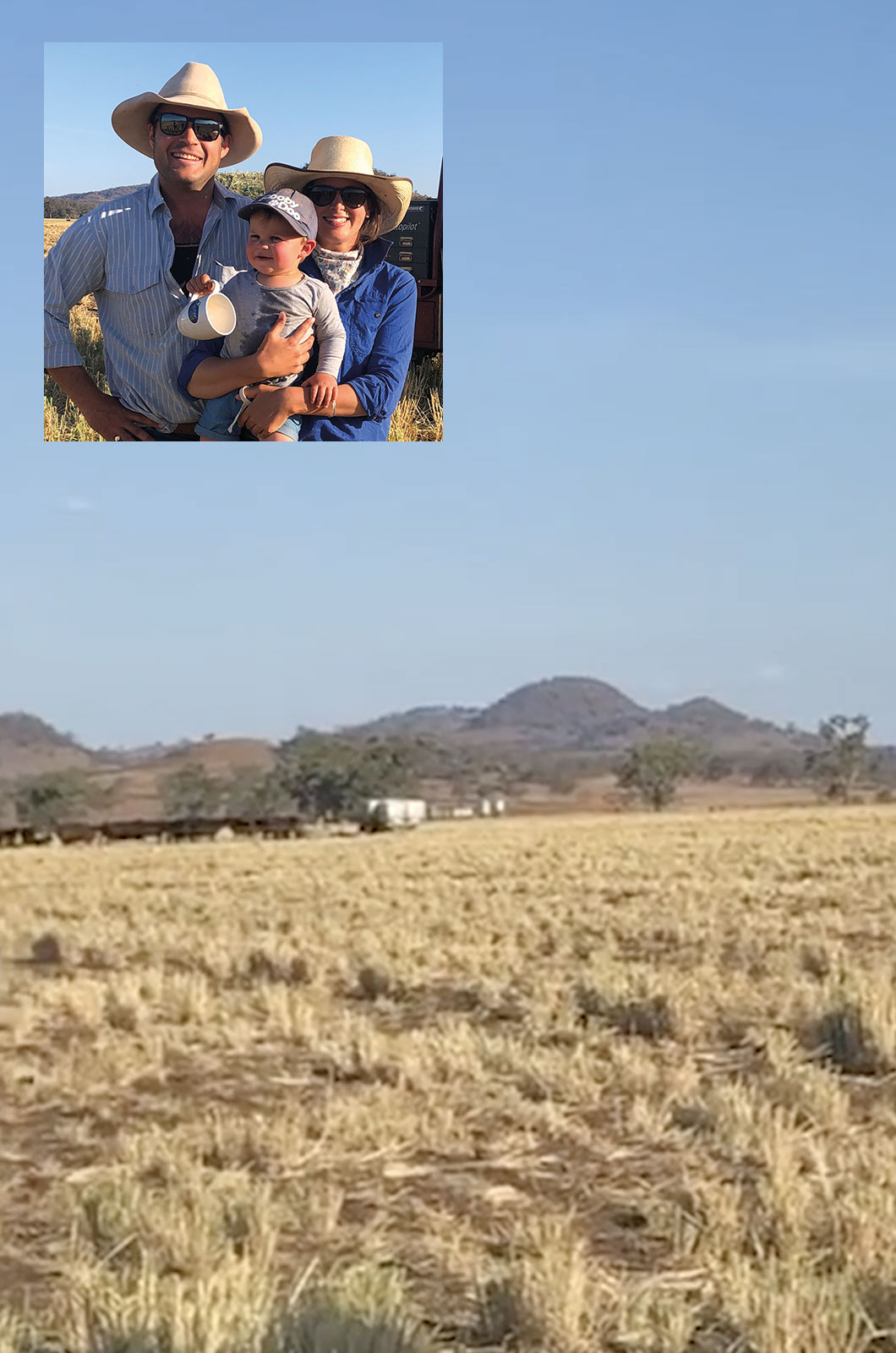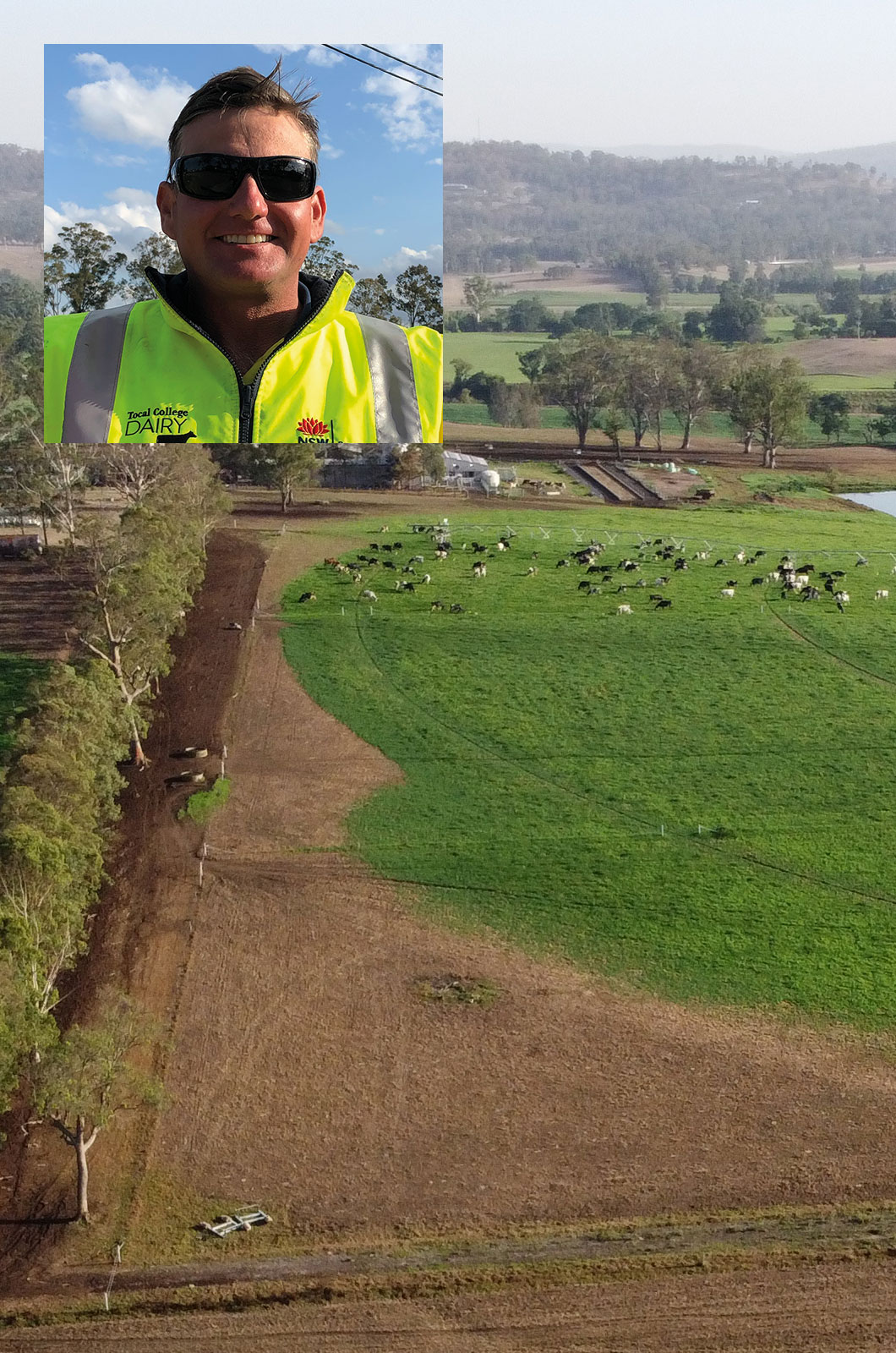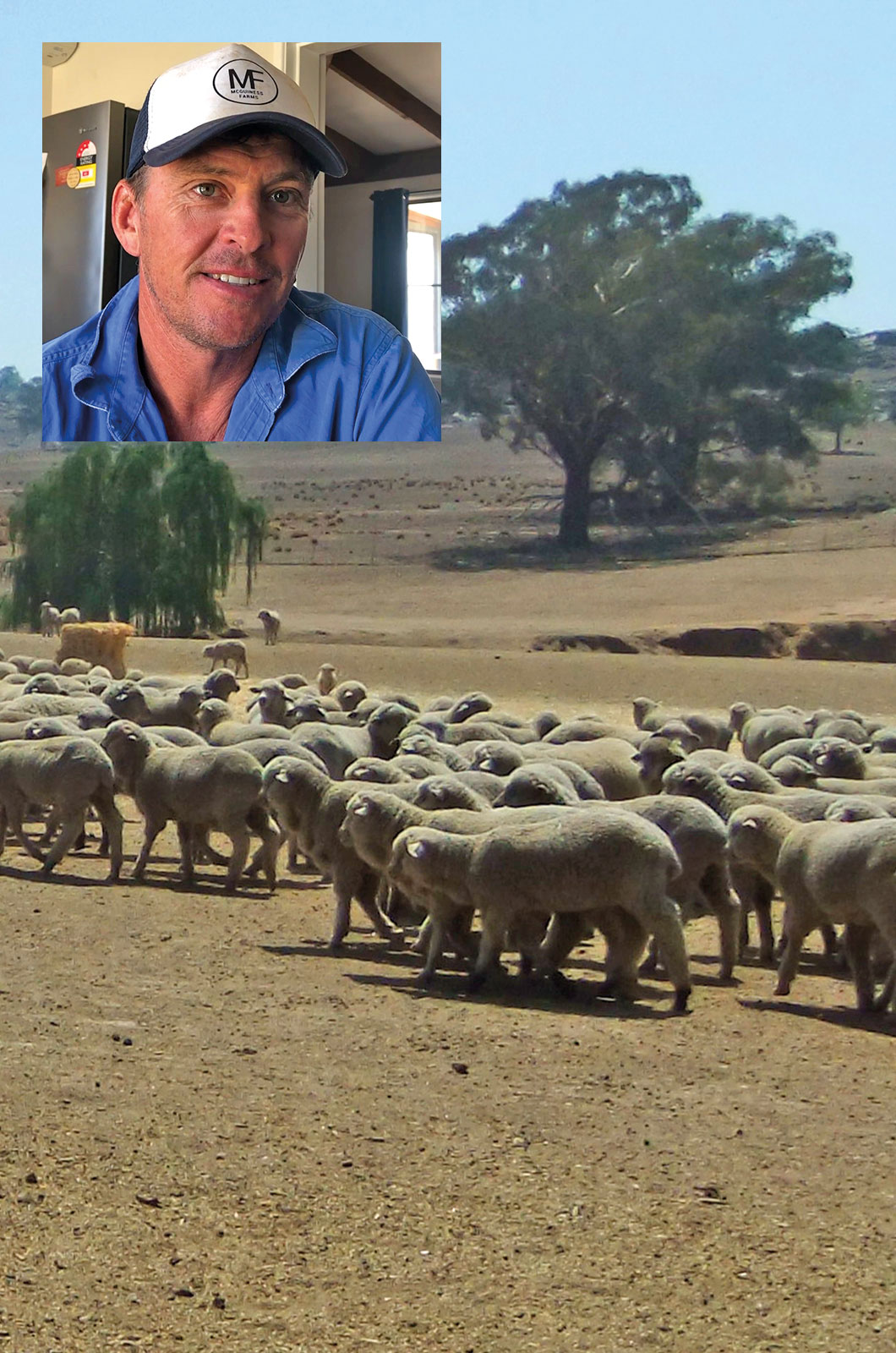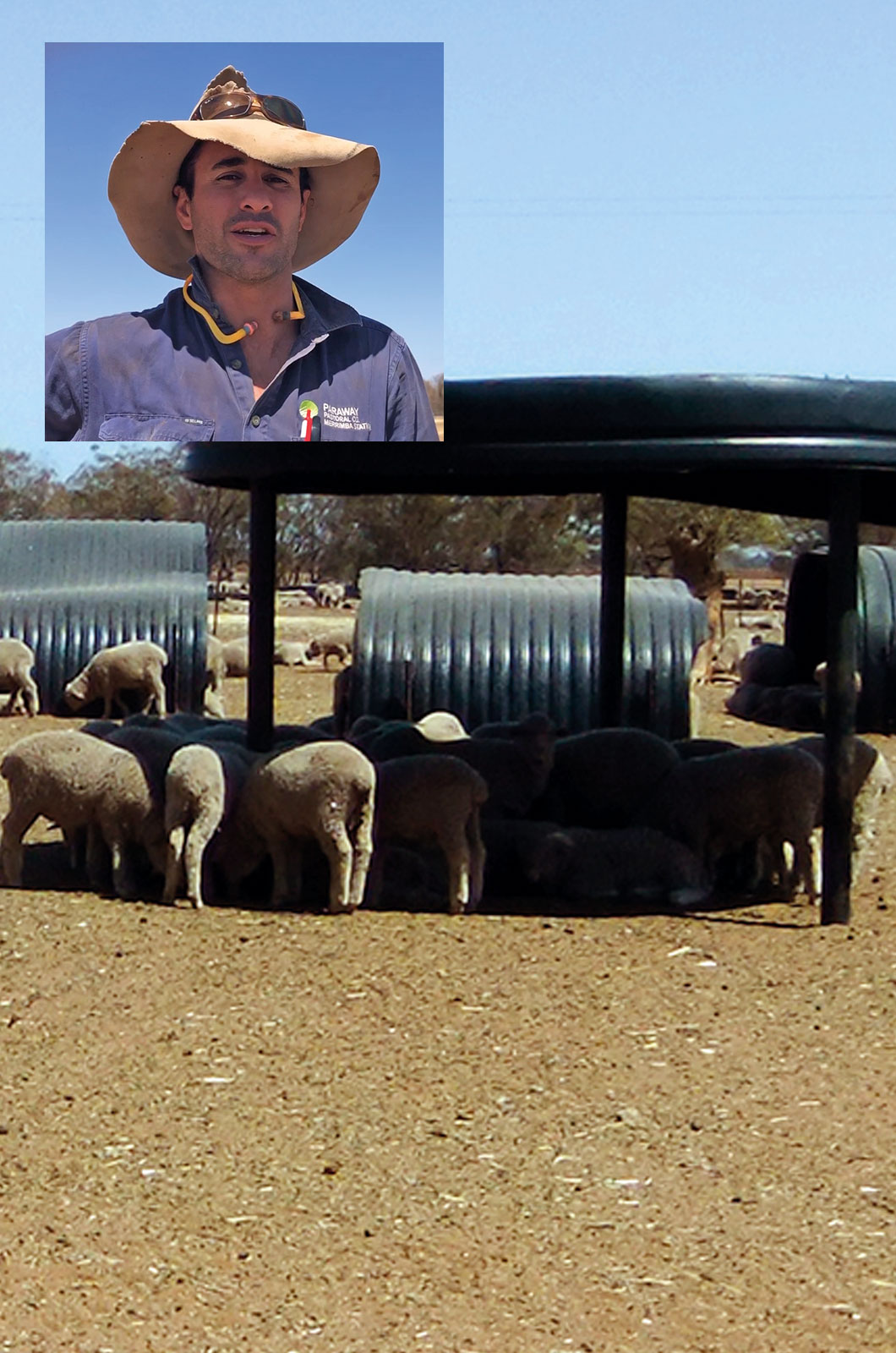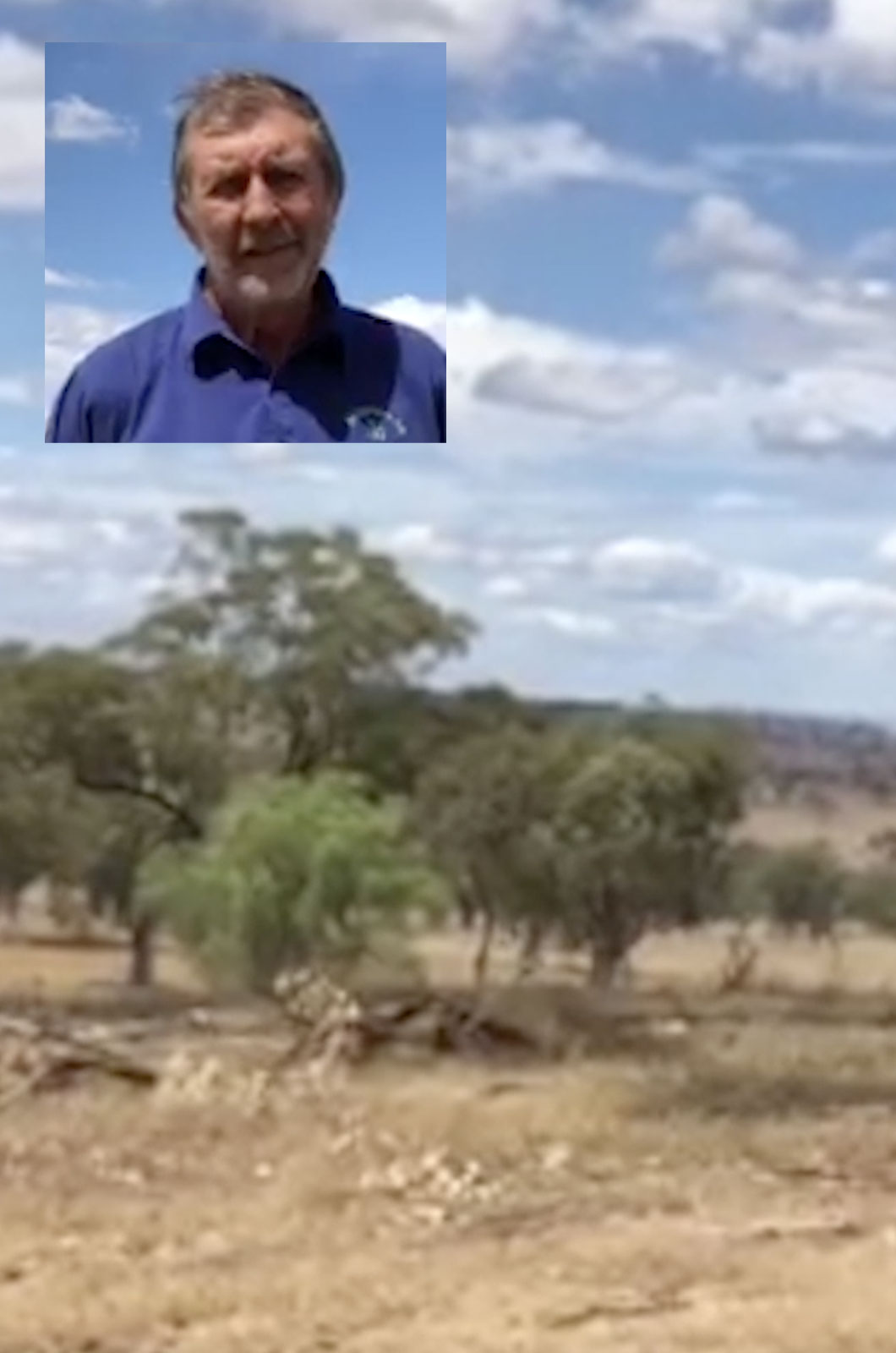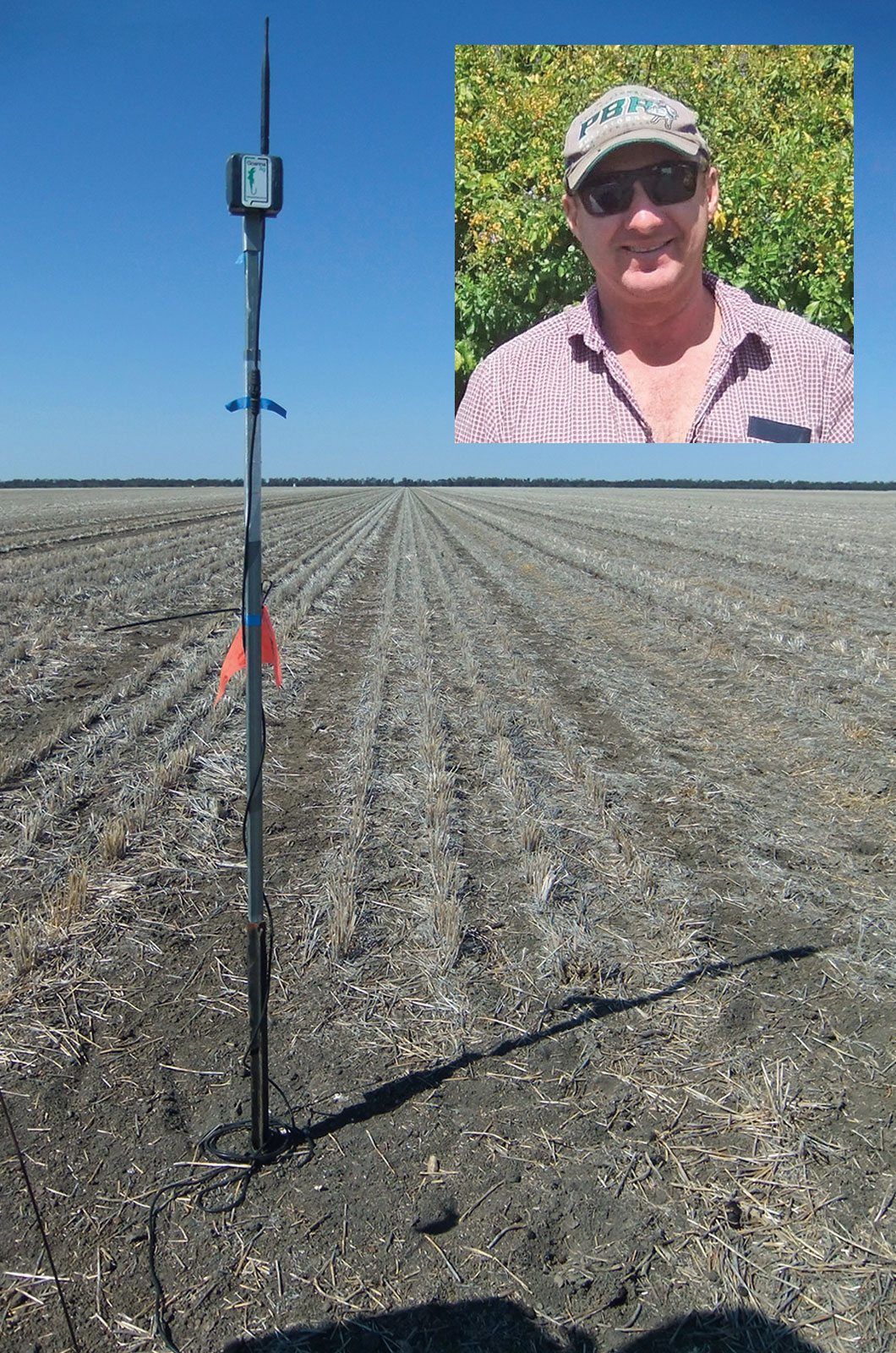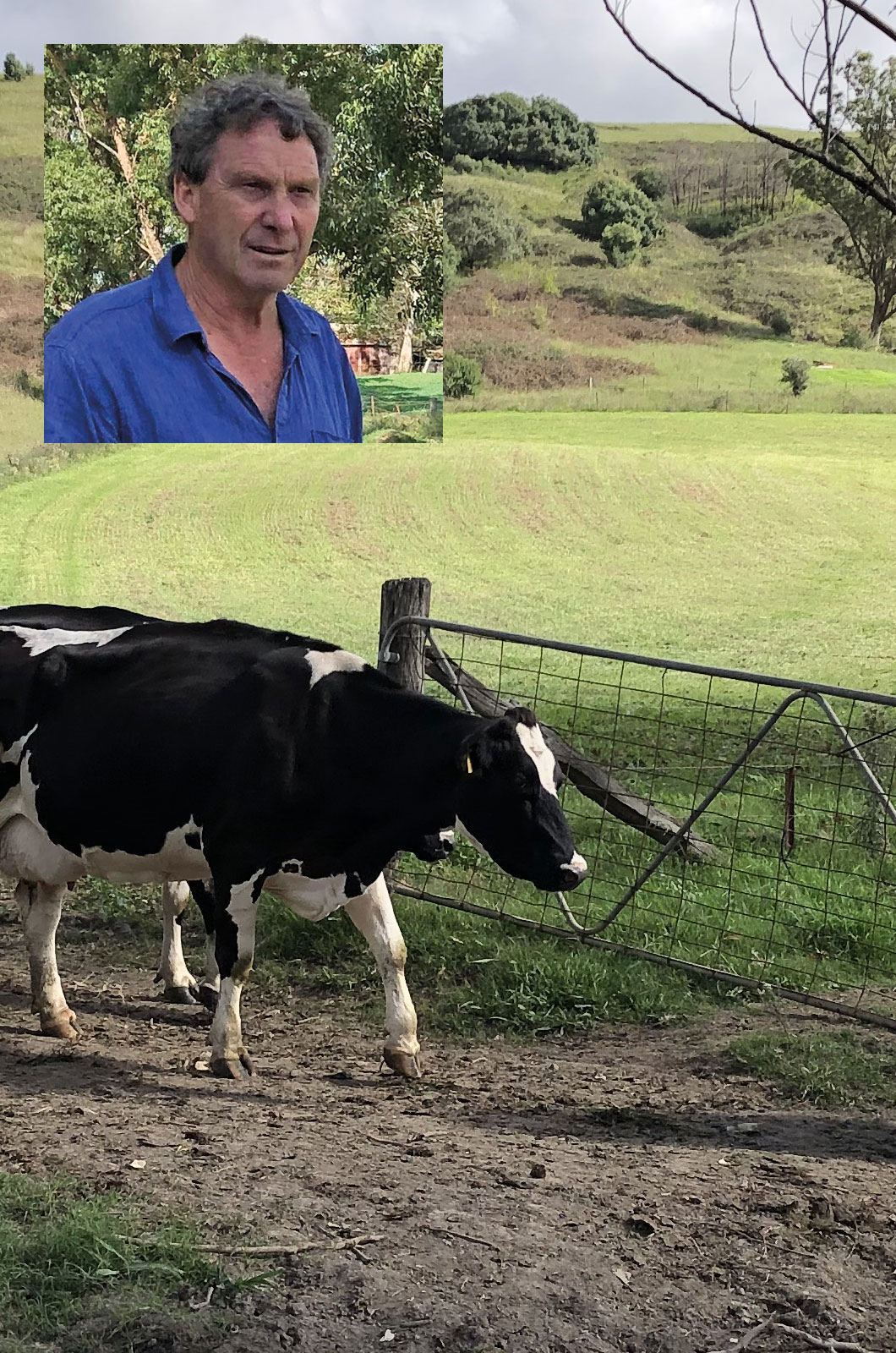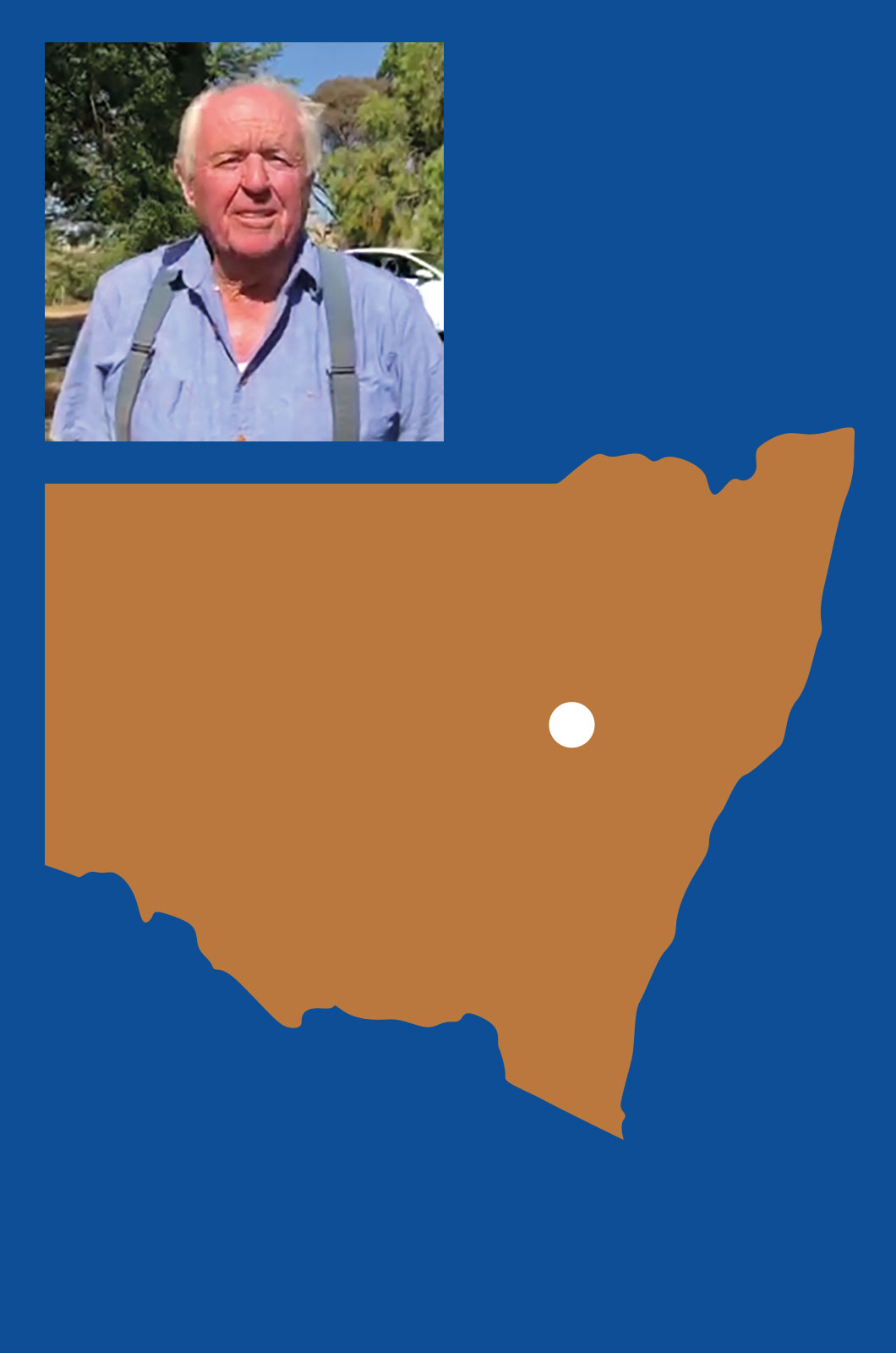 Location: Cassilis, NSW
Location: Cassilis, NSW
Owners: Jane and Tony Hegarty
Jane and Tony Hegarty run a 1000 ha property for grazing and wool production at Cassilis in the Hunter Valley region.
They say that business planning and decision making is critical for farming success, especially going into dry times. For Jane and Tony this decision resulted in destocking early.
Tony says there are four parts to the decision-making process for them:
- personal health (people)
- understanding your business (finance)
- feed availability and stock numbers (animal welfare)
- ground cover and pasture health (environmental).
Consider your health. The best decisions can be made when your health is sound. The process of selling the breeding herd is stressful. However, it could be more stressful not to sell early enough, leading to greater worries about loss of soil and pastures, loss of condition of animals, and increased financial burden. In addition, the physical toll of needing to cart and spread feed with punishing routine and frequency can itself cause stress. Moreover, the advantage of not needing to hand feed allows time for property maintenance or even taking a holiday!
While it can be emotional making hard decisions, it has to be based on business and economics.
Match stock numbers to feed and water available. If on-farm feed or water are insufficient for the stock number you would like to hold and you are thinking of buying-in feed, be aware of potential economic problems. How long will you be feeding and how much feed will you need to purchase? Understand the cost of production and compare it with the marketing opportunities. For example, it makes no sense to pay for feed that is more expensive than the market value of your stock. There are now methods of preserving the genetics beyond keeping the animals (embryo storage).
As the dry period goes on, the price of feed goes up and once you are locked in to feeding, you have no control over the price and the length of time you are going to do it. Moreover, in a widespread drought, it may become impossible to find feed to buy. If you decide to feed, know when you will finish and, for example, sell the stock. Also, carting water for livestock is not a realistic option.
Agistment is sometimes an option but freight charge must be taken into account and also the duration of the agreed agistment time. It may prove to not be long enough.
Advice:
- know the requirements of your animals How much feed and water do they need each day?
- know the cost of your business unit production. For example, what does it cost to feed one cow or ewe and for what length of time?
- have a drought plan with critical cut-off dates (in case you need it.)
Tony says “We can look ahead and if there is no rain for three months, what would it look like and what order would you sell and when? De-stocking in drought has nothing to do with the market, it’s based on the feed available. Being sustainable and looking after the pasture is important.”
Protect ground cover and pasture health. Loss of ground cover leads to loss of valuable topsoil by wind or water erosion. Remove stock from pasture well before the point of no return when pasture has been damaged beyond recovery and the soil surface is almost bare.
Belvedere is made up of heavy basalt soils and hill country. “If it gets too bare, we lose soil when we have high intensity rain, so we want to maintain some ground cover,” Tony says. Grass also responds quicker when the season does break if livestock haven’t battered the pasture.
The Hegartys use cell grazing as a management tool and move stock according to feed availability, time on the pasture and rainfall. When assessing the pasture, they focus on the palatable plants because they are the ones that will be at greatest risk.
Past experiences
The first time the Hegartys de-stocked was in 2007 and they had to do it quickly, selling all their sheep in just four days when they lost water from the creek and bore on a block they leased. After this phase, they bought in cattle, instead of sheep.
The second time they de-stocked completely was in December 2012 and they chose agistment because it was available. However, Tony says that freighting cattle down to Braidwood in the South East and Wallendbeen in the Riverina was expensive.
The third time was 2017. They started de-stocking their entire herd by selling them off from March 2017. “It was obvious we wouldn’t be able to finish the cattle we wanted to, so we started by selling the steers, then the cull heifers and then, as things deteriorated, we sold the replacement heifers, followed by the cows and calves and finished in October. We did not consider that agistment would be reliable this time.”
Earlier droughts (last two centuries) resulted in producers becoming aware of the need for reliable water. As seasons improved, producers spent money on diesel pumps rather than windmills. This allowed bore water to be pumped to higher elevations and then reticulated down through the landscape to troughs. These days, solar pumps can replace diesel pumps in low elevations but not if the bores are low flowing (pumping required for 24 hours per day).
In earlier droughts animal welfare was a greater problem than it is now. These days there are good road transport vehicles available and improved road conditions so that stock can be moved from a farm for agistment or sale well before they starve to death. This has been a good outcome for animal welfare.
Words of advice for drought preparation:
- have business and management plans. Train for a dry season during a good season
- use your data to make objective decisions: leave emotion out of it
- if you need to destock, do it early
- use opportunities such as Farm Innovation Funds (FIF) to secure water or infrastructure that helps manage dry seasons
- off-farm income is a drought strategy
- seek support and advice from reliable sources such as Local Land Services, NSW Department of Primary Industries Rural Resilience Program and Rural Financial Counsellors. The latter can help draw up a business plan for your enterprise and direct you to relevant training opportunities.
Tocal newsletter
Want to find out about news, events, courses and publications?


